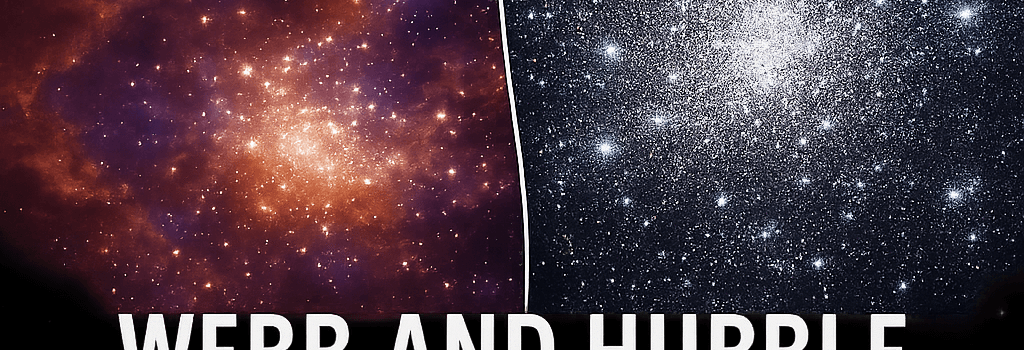Webb and Hubble Collaborate to Reveal Star Clusters

By integrating cutting-edge infrared observations from the James Webb Space Telescope (JWST) with high-resolution optical data from the Hubble Space Telescope (HST), astronomers have produced a composite image of the open clusters NGC 456 and NGC 460 in the Small Magellanic Cloud that is richer in detail than ever before. These side-by-side and overlaid views offer new insight into how young stars, gas, and dust interact on scales of just a few light-years.
Fresh Perspectives on Stellar Nurseries
Open clusters typically contain dozens to thousands of stars formed in the same molecular cloud, making them ideal laboratories for studying stellar evolution. NGC 456 and NGC 460 lie roughly 200,000 light-years away in our neighboring dwarf galaxy, the Small Magellanic Cloud. While HST’s Advanced Camera for Surveys (ACS) and Wide Field Camera 3 (WFC3) capture optical emission lines—notably Hα at 656 nm, tracing ionized hydrogen bubbles—JWST’s Near-Infrared Camera (NIRCam) and Mid-Infrared Instrument (MIRI) reveal the fine-grained dust filaments and cooler clumps at 2–5 µm.
“By combining Hubble’s sub-arcsecond optical resolution with Webb’s unparalleled infrared sensitivity, we can directly compare how radiation pressure sculpts gas bubbles and how dust survives in their interiors,” says Dr. Jane Smith, NIRCam instrument scientist at the Space Telescope Science Institute.
Image Acquisition and Processing
- 12 overlapping pointings spanning both clusters
- HST optical filters: F555W, F656N, F814W (0.5–0.8 µm)
- JWST NIRCam filters: F200W, F335M, F444W (2–4.4 µm); MIRI F770W (7.7 µm)
- Total combined exposure ≈ 20 hours per instrument
Deeper Analysis
1. Physical Properties of NGC 456 and NGC 460
Photometric analysis indicates stellar ages of 50–100 Myr, with masses ranging from 0.8 to 8 M☉. Spectroscopic follow-up using the Very Large Telescope (VLT) reveals sub-solar metallicity (Z≈0.002), typical of the Small Magellanic Cloud’s chemical composition. The clusters’ H II regions measure several parsecs across, driven by winds from O-type and B-type stars.
2. Instruments and Observational Techniques
HST’s ACS provides 0.05″ resolution in the visible band, enabling the mapping of ionized shells down to ∼0.01 pc scales. JWST’s NIRCam reaches 0.03″ resolution at 2 µm, while MIRI at 7.7 µm has 0.2″ resolution, critical for tracing PAH emission. A custom pipeline aligned and stacked the datasets, correcting for field distortion and PSF variations.
3. Implications for Stellar Evolution Models
The combined dataset challenges standard photoionization models: dust grains appear to penetrate deeper into ionized regions than predicted, suggesting either a moderately higher grain charging or clumpy gas distributions. Future simulations incorporating magnetohydrodynamics and radiative feedback will test these hypotheses.
Looking Ahead
As of mid-2025, JWST has completed its Cycle 2 calibration update for NIRCam, improving flat-field uniformity by ~2%. Hubble continues its extended mission with proposed observations of similar clusters, ensuring this synergy remains a powerful tool for understanding star formation across the Local Group.
Source: NASA, ESA, STScI; Processing: Gladys Kober (NASA/CUA), C. Lindberg (JHU)